Everything you need to know about Tobiko, how to color them, ideas to use tobiko, and the best way to store this precious seafood ingredient
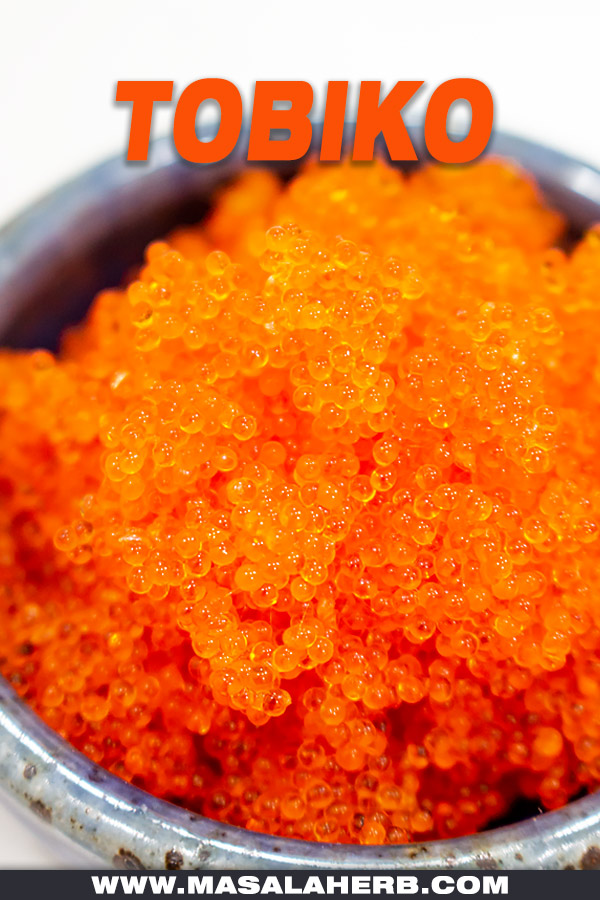

Global Food Recipes
with Spices and Herbs
Free E-Book available for a limited time. Grab yours now and get instantly inspired!
You missed out!
What is Tobiko?
Ever wonder what the fancy orange pearls on Sushi are? That’s Tobiko.
Tobiko is a Japanese word that essentially means Fish roe/eggs that are particularly harvested from flying fish.
Fun fact? Flying fish can’t actually fly, they only leap out of the water and then go back into the sea.
While there are plenty of species of flying fish out there, tobiko is mostly obtained from the Japanese flying fish.
Naturally, it is often associated with Japanese cuisine. It can be used in making sushi and it also makes for a gorgeous and colorful garnish for dishes.
The colors are mesmerizing, ranging from bright yellow to fresh green or even a stunning black! While Tobiko naturally occurs in bright red-orange.
It is tinted with squid ink to make it black, wasabi to turn it green, yuzu or lemon juice to make it yellow or beets to color it red. It brings on beautiful flavors and appetizing colors.
The taste is salty, smoky, and a bit sweet while the mouthfeel is rich and crunchy at the same time. You can use Tobiko to take the looks and flavor of your dish a few notches higher!
Tobiko Vs Masago Vs Ikura VS Caviar
Masago, Ikura, and Caviar are cousins to Tobiko, and here’s what sets them apart.
They are all obtained from different fish, Masago is the roe from a small fish called Capelin, while Ikura is salmon roe.
Size-wise, Masago is the smallest of them, Ikura is the largest, and tobiko comes in between.
Masago is not as bright and rich as Tobiko and restaurants often try to pass it off as Tobiko by coloring it brighter because it’s much cheaper, however, Masago has no crunch so always double-check and don’t get duped.
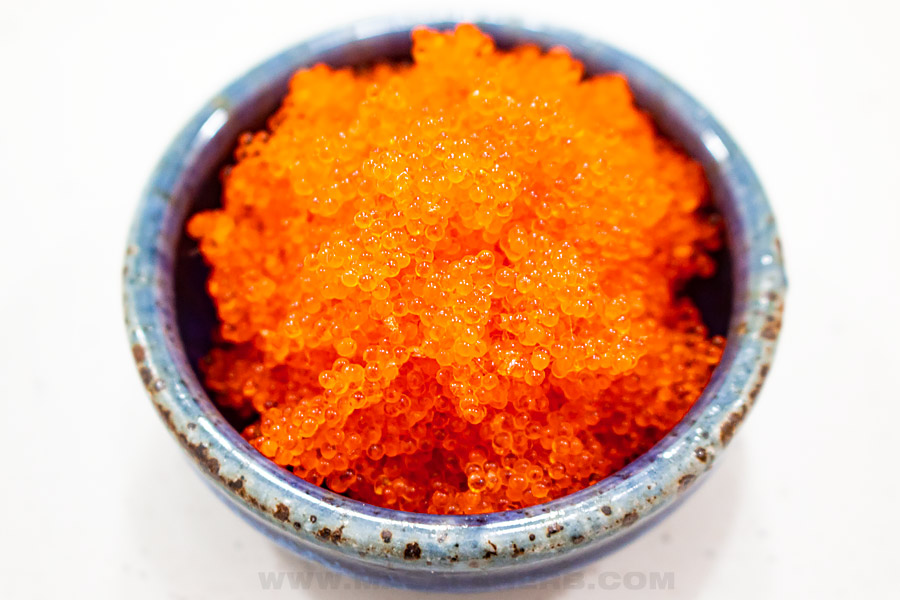
Caviar is roe, from a large species of fish called “Sturgeon'' and is one of the most expensive delicacies today.
Another fun fact, it was actually eaten by poor fishermen on Russian coasts as a staple on baked potatoes, back in the day.
The female sturgeon starts producing eggs only after 10-15 years and this makes caviar extremely expensive and difficult to lay hands on.
While traditionally, the female fish had to be killed to get her eggs for caviar, as of late, a lot of fish-friendly methods are used to extract the eggs while the fish is still alive.
On the expense meter, Caviar undoubtedly tops the list and masago is the cheapest.
Uses
Tobiko is cured with salt and used in a variety of traditional and non-traditional ways across cuisines today.
It is widely used in sushi rolls like the Boston Roll and California Roll and to top off nigiri sushi.
While sushi remains a permanent home for it, it is making its way into modern cuisine and fusions.
It can be used in making Korean rice balls called “Chumoppa” just the way it is used in Japanese rice balls called "Onigiri”.
As Tobiko doesn’t go well solo, it is mostly used to enhance the flavors and textures of a dish.
It goes well as a new year's canape with bruschetta or with deviled eggs.
You can ladle some onto omelets, swirl it into Pastas, risottos, and salads, mix it up with fried rice or even pair it with crackers and cheese.
You can also spin it into liquids like salad dressings, soups, and sauces for a pop of color and flavor as they hold their shape very well.
Hawaiian Poke Bowls, toasts, and open-face sandwiches are a great way of using Tobiko too.
Considering how versatile and adaptable it is, the possibilities are endless!
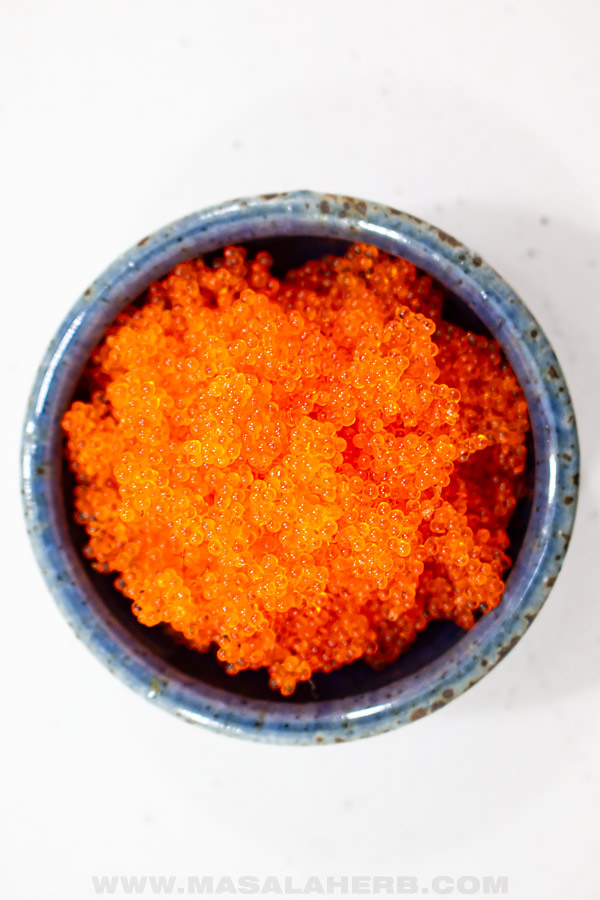
Storing
If you’ve opened the jar, it is ideal to consume the Tobiko within 3-4 days and if you haven’t yet, it stays good in the refrigerator for up to 15 days.
You can easily freeze it for up to 6 months and every time you need to use some, you can scoop out the amount you need with a spoon, and use it after it’s thawed.
Make sure you use the thawed tobiko within 3 days.
FAQs
You can easily buy it from specialty Asian or Japanese stores near you. You should be able to spot it in the seafood aisle, in small packs. You might also find them in different colors and flavors and be spoiled for choice. You can get it delivered to your doorstep through online portals.
Yes, natural and real fish eggs are gluten-free but some restaurants might use synthetic ones, made out of gelatin and oils. Soy sauce is almost always used in tobiko and since it is not gluten-free unless specified, you should always cross-check. Feel free to ask about it while buying a pack or eating out.
The female flying fish has a tendency to lay her eggs on floating objects in the sea, like the rafts or the seaweed, where she can also nest conveniently. Therefore, it becomes easy to harvest the eggs by simply detaching the cluster of eggs from the object. Fishermen lay natural traps for nesting made of coconut leaves and wood overnight, and the eggs are often found the next day.
Pregnant women should ideally keep away from raw fish, or fish roe and eggs as it is often contaminated with bacteria and germs. It is however safe to consume cooked, pasteurized and refrigerated fish roe. Always consult your doctor to be sure and safe.
Yes, black or orange vegan caviar, also known as seaweed pearls can be used on food instead of tobiko fish roe.
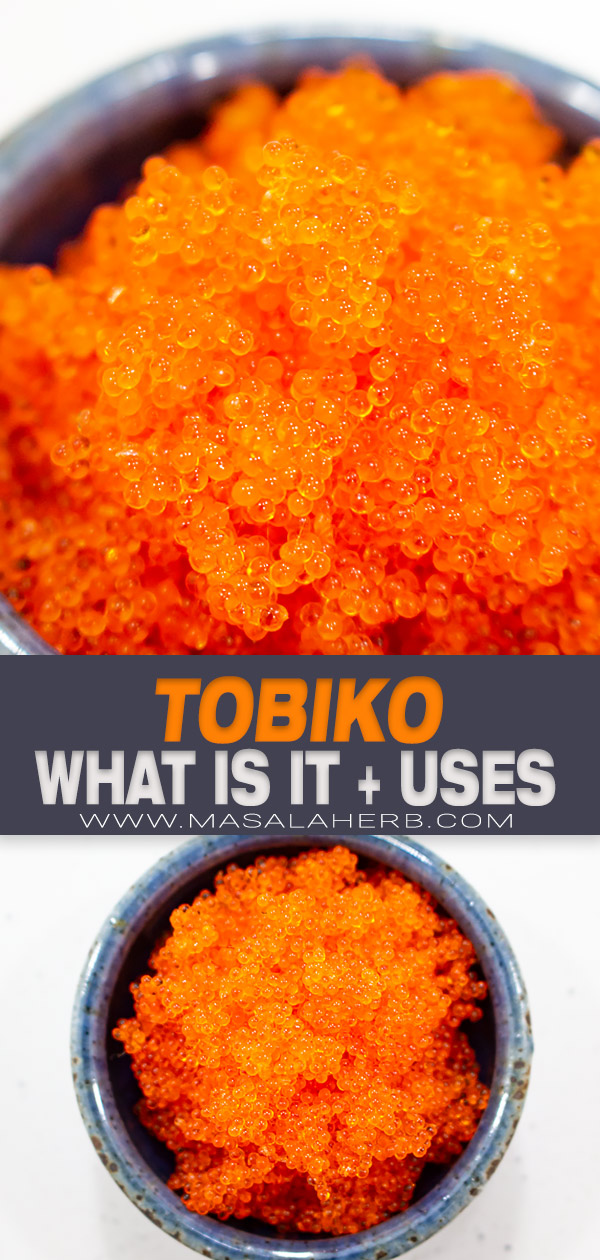

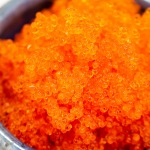
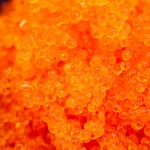
Comments
No Comments